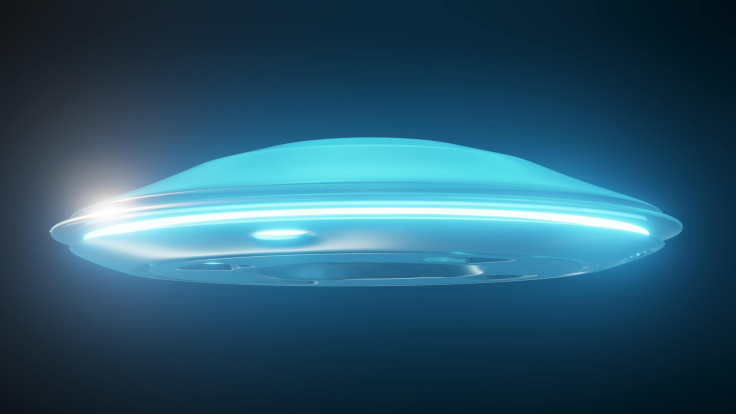3I/ATLAS Is Alive? New Preprint Claims Object Is a Plasmatic Organism
Could this mystery object force a fundamental rewrite of what 'life' truly means?

The interstellar object 3I/ATLAS has always been a mystery. Still, a recent preprint claims this enigmatic visitor might be a self-organising, plasmatic entity—a staggering possibility that a new form of life is orbiting the sun.
A Cosmic Puzzle: Is 3I/ATLAS a Living Plasma?
Scientific Director at Biotecnología Exosomal S. de R.L. de C.V., Rangel Martínez's paper on ResearchGate highlights that 3I/ATLAS exhibits several unusual features in its movement, appearance, and light signature, distinguishing it from typical comets.
He draws attention to the fact that its speed is not explained by gravity, its path seemingly matching that of various planets, and its form changing unpredictably.
The Cosmobiont Hypothesis: Did Someone Just Argue 3I/ATLAS Is Alive?
— Skywatch Signal (@UAPWatchers) November 17, 2025
Alright. I’ve gone through the full document titled 3I/ATLAS as an Interplanetary Cosmobiont, a 2025 preprint arguing that 3I/ATLAS might not be a comet, an asteroid, or an artifact… but a self organizing… pic.twitter.com/q6HsNDWqXC
He maintains that typical comet theories struggle to explain all of this object's behaviour thoroughly. Other teams' findings reinforce some of his points: for example, when 3I/ATLAS was roughly 4.4 AU from the sun, analysis of its light didn't show any trace of common comet gases like CN and C₂.
READ MORE: 3I/ATLAS Reveals Unusual Tail Structure in New Mexico Photo, Igniting Debate
READ MORE: Harvard's Avi Loeb Claims 3I/ATLAS Could Be 'Artificial' If No Gas Cloud Seen
Introducing the 'Cosmobiont' Idea
Martínez presents a daring new concept based on plasma studies. He believes that 3I/ATLAS may represent a kind of life completely unlike anything we typically picture: organisms made of inorganic plasma that can organise themselves, use energy, and respond to magnetic and electric forces.
A new scientific paper is proposing that 3I/ATLAS currently visiting our solar system isn't a rock at all.
— Carlos E. Perez (@IntuitMachine) November 18, 2025
It might be a living, intelligent organism made of plasma.
1/
So, astronomers are tracking this thing. It came from another star system, like 'Oumuamua did. But it's… pic.twitter.com/dYKVdoOSf1
These suggestions relate to the Cosmobiont Theory, a concept that describes structures observed in Earth's upper atmosphere. These entities are said to group together, pulse, create charged cores, and react to changes in electromagnetic fields.
Martínez links these plasma structures found on Earth to the activity of 3I/ATLAS. This proposes a conceptual link that could connect events in our atmosphere with events occurring between the stars.
Core Evidence: Speed and Form
A main point of the preprint is that 3I/ATLAS speeds up without gravity's influence—something standard gas release doesn't correctly account for. Martínez notes that observations show 'significant non-gravitational acceleration, without evidence of sublimation of typical volatile compounds such as CN, C2, CO+, or H2O. '
New research by Ricardo Rangel Martínez proposes a bold idea: what if 3I/ATLAS isn’t behaving like a typical interstellar comet because it isn’t one?
— Galactic Hurricane (@forwhatevertime) November 18, 2025
In a new preprint, Martínez argues that 3I/ATLAS may fit the profile of a “cosmobiont” — a self-organizing plasma structure… pic.twitter.com/xeZnM1sFAe
He also highlights similarities in structure: studies of plasma organising itself indicate that these entities can form double layers, spiral shapes, and electrically charged centres when the environment is right, particularly where cosmic dust and electromagnetic fields are present. He argues that these characteristics match the observations of 3I/ATLAS.
Orbit Matching: Deliberate or Random?
A highly debated point of Martínez's theory is the claim that the path of 3I/ATLAS is in sync with planets, suggesting its close passes to Venus, Mars, and Jupiter might be more than just chance.
The paper states that its trajectory is too unlikely to have occurred by sheer coincidence, suggesting the object could be using an internal system to find its way. If this holds up, the consequences are enormous, changing not just how we label 3I/ATLAS but also our view of life that isn't carbon-based.
READ MORE: 3I/ATLAS: Harvard's Loeb Urges NASA To Release 40-Day-Old HiRISE Images Amid Global Intrigue
READ MORE: 3I/ATLAS Survived Perihelion as Single Body — Harvard's Loeb Questions Its Origin
Consequences for Life and Astrobiology
Martínez's theory questions the standard way we define living things. He argues that if 3I/ATLAS turns out to be a 'cosmobiont,' we must stop viewing life as strictly needing carbon and water. Instead, he proposes it's a broader event: systems that organise themselves and handle energy, potentially existing under significantly different physical rules.
He goes on to suggest that entities like this might create a second, hidden life system—one we can't detect using conventional methods such as chemistry or biology. Instead, they could be common in high-energy environments such as the interstellar medium, the ionosphere, or the Earth's thermosphere.
Risks, Constraints, and Next Steps
It is worth noting that Martínez doesn't claim his idea is proven. He admits that current information lacks 'clear signs of living structures, communication, or patterns of reproduction.' Furthermore, while the cosmobiont concept is logically sound, it remains a theory until further studies or testing provide support.
To evaluate this theory, he lays out a few approaches:
- Create new equipment specifically designed to find the light and movement patterns of self-organising plasma out in space.
- Recreate the environment between stars in labs to see whether plasma with unexpected behaviours can actually form.
- Reexamine old records from missions such as STS, SOHO, and ISS to search for any signs of cosmobiont-type plasmas.
- Schedule upcoming missions or close passes aimed solely at interstellar objects exhibiting unusual characteristics.
Beyond the 'Comet' Label
Even if the cosmobiont idea proves incorrect, Martínez's paper is still important: it moves the scientific discussion beyond simply saying 'it's just a comet,' encouraging researchers to consider genuinely unusual possibilities for extraterrestrial life and signs of technology.
As we discover more interstellar objects and our observation methods improve, speculative yet well-argued ideas like this will be vital for broadening not just what we look for, but also our entire concept of cosmic life.
© Copyright IBTimes 2025. All rights reserved.




















